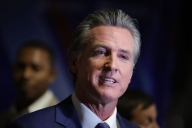You have /5 articles left.
Sign up for a free account or log in.

Sorbetto/Digitalvision Vectors/Getty Images
Conversations about leadership turnover in higher education tend to focus on what a successful announcement and onboarding look like for a newly appointed president. But for a new president to arrive, someone needs to have left, and we so rarely talk about how to position leaders for a graceful exit. Whether it’s of the leader’s own volition or not, presidential tenures have been getting shorter for decades now, and for the sake of both our leaders and our institutions, we must think more strategically about the end of presidencies.
As the face of a college or university, presidents are seen as the physical embodiment of an institution, and often the two are inextricably linked. Part of a graceful departure is highlighting the distinction between the two and re-establishing the leader as an individual.
For amicable departures, the people who choose to leave a presidency on their own terms, it’s time to think beyond simply saying thank you and listing accomplishments to celebrate their tenure. Instead, those leaders should consider how best to balance their legacy at the institution with their personal goals for what’s next—whether that’s another presidency, consulting, pivoting to another industry or retirement. Ideally, in the last year of their tenure, outgoing presidents can focus on shifting their thought leadership and constructively separating their personal identity and brand from their current institution.
For those seeking another presidency at a different institution, that separation can start with a slight language change from that of the president of a specific institution to a higher education leader. They should also steep themselves in the issues of the sector or type of institution they may be targeting for their next appointment and ensure their thought leadership reflects this broadening of focus.
Some departing presidents look to move into consulting, and they, too, need to broaden their platform. They should align their thought leadership, speaking schedule and conference attendance with the big issues in the national higher education landscape. As those presidents close out their tenure, they’ll need to pull up from the day-to-day of their institution and think more broadly to position themselves to serve a wide array of campuses. For presidents hoping to shift into a different industry, this broadening should go beyond higher education into the new target areas and point to parallels that show how they’re engaged in larger issues and are ready to make a difference.
Talking About Terminations
While it may be easier to implement such outgoing plans with a friendly presidential departure, the less-than-amicable splits deserve consideration as well.
Certainly, presidential malfeasance may rightly require a rapid departure and offer little time for any strategies beyond crisis management. But in situations that result in termination where malfeasance is not a factor, the board and senior communications leaders should consider an exit strategy for those who came up short or made missteps in some particular area of the job description. Taking the time to be planful in these circumstances both keeps the best interests of the institution front and center and ensures the outgoing president is treated with professionalism and dignity—something that will likely be closely watched by those who may consider applying to fill their position in the near future.
For those presidents, the process of broadening and pivoting their thought leadership platforms can look very similar to those departing on their own terms. But there is the added challenge of framing the departure in a way that is honest but also will not impede their pursuit of another presidency or other leadership role. Most presidents who are facing such a departure know to retain an attorney to help them negotiate the financial and legal terms of their departure. Yet relatively few ask for the inclusion of communications and leadership counsel. Communications support benefits both the individual and the institution as they part ways.
Specialized exit strategy communications can help position the outgoing leader for whatever it is they plan to do next and help them navigate and negotiate how the departure will be messaged to the community. For the institution, communications support for messaging around the departure is essential for a smooth transition— and involves answering questions from who will make the announcement to what the language will look like to whether the departing leader will have a chance to engage directly with important audiences and communities of the institution.
For the individual, this counsel can help them frame how they’ll talk about leaving the job or institution and their accomplishments from their tenure, as well as how they can stay engaged in higher education issues that matter to them and the work they still want to do. Communications support can also assist with navigating news media interest in the departure as well as the interview process for future jobs, including considering what questions may arise and how outgoing presidents can answer and address questions honestly about their previous institution, success and departure.
Whether or not a leader is making the choice to leave the role, these transitions are occurring more frequently as more presidents depart sooner and younger, making it imperative to better prepare for eventual departures. In facing the next presidential turnover, having an exit plan in place allows for professional, strategic transitions that serve the best interests of not only the outgoing leader but the entire institution, as well.








